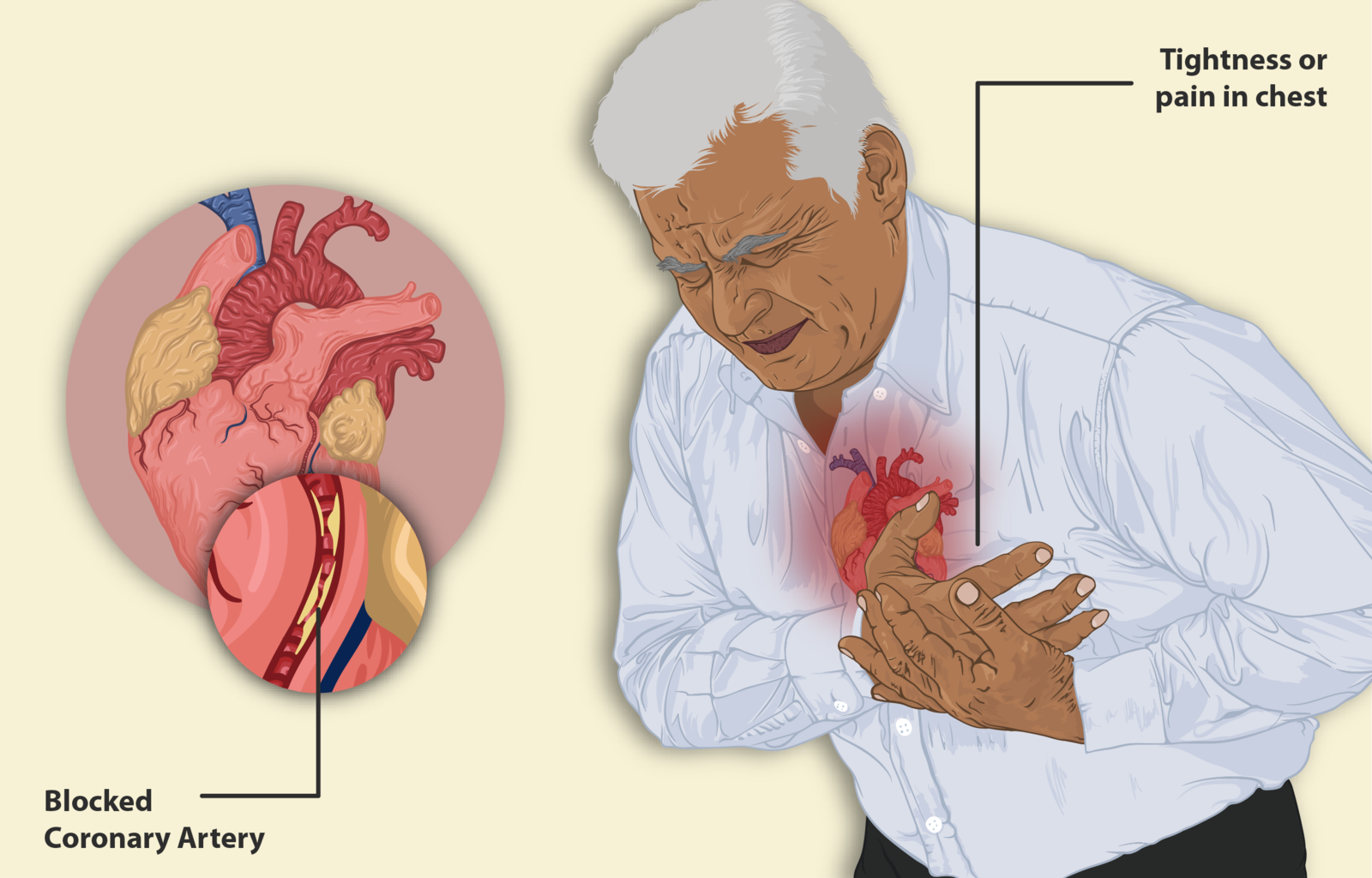Difference Between Heart Attack and Heart Failure
A heart attack is when an artery on the heart is blocked, compromising blood flow to the muscle. Heart failure is when one or more ventricles of the heart starts to fail.

What is Heart Attack?
Definition:
A heart attack is also called a myocardial infarction and it is when a blockage formed in a coronary artery stops blood from passing to the heart muscle.
Causes and risk factors:
The blockage causing a heart attack is usually composed of cholesterol that effectively plugs the vessel impeding flow to the heart muscle, myocardium, which then starts to die due to lack of oxygen and nutrients.
Diagnosis:
A physical examination noting symptoms can indicate a possible heart attack, but an ECG provides confirmation because it shows specific electrical changes in how the heart is contracting. Blood tests can also show levels of certain cardiac enzymes, which are indicative of a myocardial infarction.
Symptoms and complications:
Symptoms include chest pain and squeezing, along with pain and discomfort that radiates to the jaw, neck, and back. People also may have heartburn or feel very nauseated. Sweating, lightheadedness, and shortness of breath are also symptoms common in heart attack patients. Without rapid treatment a heart attack quickly causes death.
Treatment:
Balloon angioplasty and angioplasty using stents can sometimes help to unblock arteries. In other cases, a coronary artery bypass grafting (CABG) procedure needs to be done. In a CABG, open heart surgery is done and the blocked artery is bypassed by the surgeon stitching a piece of blood vessel taken from a leg vein. The idea is to bypass the blocked blood flow.

What is Heart Failure?
Definition:
Heart failure is when the lower chambers, the ventricles, begin to malfunction and fail. Either the left or right ventricle of the heart can fail.
Causes and risk factors:
Heart failure can be caused by heart attack and heart arrythmias that weaken the heart. Myocarditis, in which the heart is inflamed, can cause heart failure as can inherited conditions such as heart valve disorders. Certain drugs, such as cocaine, can also permanently damage the heart muscle resulting in heart failure. Certain infections and illnesses such as diabetes can also cause harm to the heart.
Diagnosis:
Diagnosis can be done by physical examination and chest X-ray. An echocardiogram can be done to see how the heart is functioning. An ECG and MRI may also be useful in diagnosing cardiac failure and levels of B-type natriuretic peptide (BNP) and N-terminal-pro-BNP (NT-pro-BNP) in the blood can show that the heart is not pumping properly.
Symptoms and complications:
Symptoms vary depending on which of the two ventricles is failing. In left ventricular heart failure, the signs include difficulty breathing, at first during exercise and as the illness progresses, fluid builds up in the lungs making breathing increasingly difficult, and patients may cough. In right ventricular failure, fluid builds up in the legs, feet and around and in organs of the abdomen such as the liver and intestines. Patients may gain weight because of fluid retention and they may feel weak and tired.
Treatment:
The treatment of heart failure depends on the cause and severity and ranges from medication to mechanical circulatory support and heart transplant surgery.
Difference between Heart attack and Heart failure?
Definition
A heart attack is when a coronary artery is blocked resulting in stopped blood flow to a part of the heart muscle. Heart failure is when the left or right ventricle of the heart fails to function properly.
Causes
A heart attack happens when there is a cholesterol plaque that blocks one or more than one of the coronary arteries of the heart. Heart failure can occur for several reasons such as heart attack, valve disease, congenital cardiac disease, infections, arrythmias, and drugs.
Diagnosis
A heart attack can be diagnosed from an ECG by noting anomalies on the graph or by testing for cardiac enzymes in the bloodstream. Heart failure is diagnosed based on the symptoms a person has in addition to further tests such as chest X-ray, MRI, and echocardiogram.
Symptoms
Sweating, chest, jaw and neck pain, shortness of breath, fainting, and nausea are all symptoms of a heart attack. Symptoms of heart failure include shortness of breath and congested lungs in the case of left ventricle failure; swollen legs and abdomen with right ventricle failure.
Treatment
Angioplasty or coronary artery bypass grafting during open heart surgery are the treatments used for most cases of heart attack. Medication can be used to treat heart failure and sometimes, a heart transplant is also needed.
Table comparing Heart attack and Heart failure

Summary of Heart attack Vs. Heart failure
- A heart attack and heart failure can both lead to death.
- A heart attack is usually due to blocked coronary arteries.
- Heart failure has many different causes.
- A heart attack is related to heart failure in that it can cause the heart to fail.
- Difference Between Rumination and Regurgitation - June 13, 2024
- Difference Between Pyelectasis and Hydronephrosis - June 4, 2024
- Difference Between Cellulitis and Erysipelas - June 1, 2024
Search DifferenceBetween.net :
Leave a Response
References :
[0]Image credit: https://commons.wikimedia.org/wiki/File:Depiction_of_a_person_suffering_from_heart_failure.png
[1]Image credit: https://commons.wikimedia.org/wiki/File:A_man_having_a_Heart_Attack.png
[2]Fine, Nowell M. “Heart Failure (HF) (Congestive Heart Failure)” MerckManuals, 2020, https://www.merckmanuals.com/professional/cardiovascular-disorders/heart-failure/heart-failure-hf
[3]Mayo Clinic. “Heart attack” Mayo Clinic, 1998-2021 Mayo Foundation for Medical Education and Research (MFMER). https://www.mayoclinic.org/diseases-conditions/heart-attack/symptoms-causes/syc-20373106
